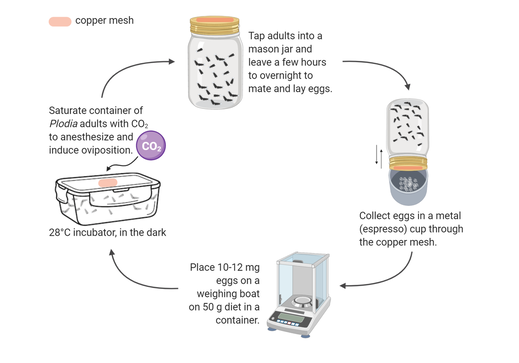Photo credit: Flickr user Caramosca (CC BY-NC 2.0) ; https://flic.kr/p/2bLPu4q
Background
One out of ten species known to man are moths and butterflies of the Lepidoptera order. While this biodiversity provides new opportunities to understand the genetics of those insects, experimenters have been limited by the lack of tractable laboratory system for routine genetic analysis. In this EDGE (Enabling Discovery through GEnomic Tools) project we will develop the Indian mealmoth (Plodia interpunctella) as a laboratory system for discovery in lepidopteran genomes by developing and disseminating tissue-specific assays and genome editing standards for this lineage. These efforts will open new avenues of research about the physiology, immunology, reproduction, developmental genetics, and evolution of an insect order of enormous diversity that includes numerous species of economic and ecological importance.
Why Plodia?
|
In addition of being an important pest of stored food across the world, this organism is tailored for genome editing due to a unique suit of reproductive and rearing features:
|
How?
Variations of CRISPR Homology-Directed Repair (HDR) will be optimized using a dominant rescue assay where thousands of injected individuals will be screened for the targeted repair of a recessive mutation. Optimization assays are designed to yield meaningful comparisons of the in vivo performances of transformation methods for short allele replacements and long DNA knock-ins, and positioned to catalyze further innovation across other insect emerging systems.
Beyond the scientific community
Beyond their use in fundamental research, the tools developed here will potentiate the integrated management of crop pests and forest defoliators, and inform the biology of important food chain components and pollinators. Finally, Plodia itself shows a worldwide distribution and presents a threat to global food security. The low-cost of maintenance and our EDGE-derived resources will thus stimulate work in this system at an international scale, and the team is dedicated is dedicated to organize and train a community of scientists interested in working with Plodia in their home countries. This effort includes the training of young scientists and the assemblage of a collaborative community of genome editors working with a pest that infests grain storage units and households alike all over the world.

